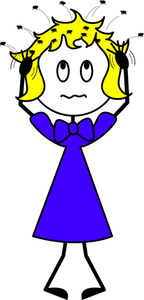I wanted to share a funny and inspiring story about head lice and how it has affected my family, but, fortunately, I do not have one . . . yet. My daughter recently started Pre-K and I am wondering if she will be bringing home more than artwork and her Frozen backpack this year. According to the Centers for Disease Control (CDC), there are approximately six to 12 million children aged three to eleven that get head lice in the United States each year. Children can then spread head lice to parents, siblings, or anyone who comes in close contact with them. Head lice infestation, or pediculosis, is spread by head-to-head contact. Contrary to popular belief, lice do not jump or fly. They crawl from person to person. Head lice also can occasionally be transmitted by sharing combs, towels, hats, or other items that come into direct contact with an infected individual. A head lice infestation does not occur due to poor hygiene or unsanitary living conditions — ANYONE can be affected. Lice happens.
The best method for treating head lice is prevention! September is head lice prevention month. Instruct your children not to share items with their friends that come in contact with their head, such as hats, combs, ear-buds, hair accessories, etc. Avoid laying on furniture, carpet, or even toys that have been in recent contact with an infected individual.
If you do receive the dreaded letter from the school reporting an infestation, do not panic. Instead, closely inspect your child’s hair and recently worn clothing for evidence of head lice or eggs (nits). All household members, as well as close contacts, should be checked for infestation. Everyone who is infested should receive treatment. Treatment of head lice consists of using an over-the-counter topical medication, such as permethrin (Nix). If over-the-counter medication proves ineffective, you should see a health care professional for prescription treatment.
Have a great school year! Is your head itching yet?
-Erin Hegge, PA-C




Thanks for sharing your thoughts on treatmennt for psoriasis.
Regards